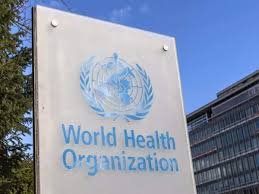WHO Certifies India’s Triumph Over Trachoma Elimination
Introduction: A Significant Milestone in Public Health
On October 4, 2024, the World Health Organization (WHO) officially certified India’s successful elimination of trachoma as a public health problem. This achievement marks a monumental step in India’s public health efforts, showcasing the country’s commitment to eradicating preventable diseases. Trachoma, a contagious bacterial infection of the eye, is a leading cause of preventable blindness, affecting millions globally.
The Path to Elimination: Strategies and Initiatives
India’s journey towards trachoma elimination began with the implementation of the SAFE strategy, which encompasses Surgery, Antibiotics, Facial cleanliness, and Environmental improvement. The National Programme for Control of Blindness and Visual Impairment (NPCBVI) played a crucial role in coordinating these efforts.
The program involved comprehensive awareness campaigns to educate communities about hygiene and the importance of eye care. Furthermore, health workers conducted regular screenings to identify and treat cases early. This multifaceted approach helped reduce the incidence of trachoma significantly.
Global Context: India’s Position in Trachoma Elimination
With this certification, India joins the ranks of countries that have successfully eliminated trachoma, underscoring the global health community’s efforts to combat this disease. The WHO emphasizes that while progress has been made, sustained efforts are essential to prevent a resurgence. India’s success serves as a model for other nations facing similar health challenges, showcasing how targeted interventions can lead to significant health outcomes.
Community Involvement: The Heart of the Initiative
Community engagement was pivotal in India’s trachoma elimination campaign. Local leaders and health workers mobilized communities, encouraging participation in cleanliness drives and ensuring the proper use of antibiotics. This grassroots approach not only facilitated better health outcomes but also fostered a sense of ownership among communities regarding their health.
Conclusion: Looking Forward
India’s certification of trachoma elimination is a testament to its public health achievements. However, the journey does not end here. Continued vigilance and investment in health infrastructure are necessary to maintain this status and address other pressing health issues. The success of the trachoma elimination program sets a precedent for other public health initiatives, emphasizing the importance of a collaborative and comprehensive approach to health care.

Why This News is Important
Significance of Trachoma Elimination
The WHO’s certification of India’s trachoma elimination highlights a significant victory in public health, reflecting the country’s dedication to eradicating preventable diseases. This accomplishment not only improves the quality of life for millions but also alleviates the economic burden associated with untreated eye diseases.
Health Education and Awareness
India’s successful elimination of trachoma underscores the effectiveness of health education and community involvement. The program demonstrates how public awareness campaigns can change health behaviors and ultimately lead to improved health outcomes.
Global Health Leadership
This certification positions India as a leader in global health, showcasing its capability to tackle infectious diseases effectively. It serves as an inspiration for other nations facing similar public health challenges, reinforcing the idea that with the right strategies, elimination of diseases is possible.
Encouragement for Future Initiatives
India’s success in trachoma elimination encourages further investments in public health initiatives. It emphasizes the need for continuous monitoring and action to prevent the resurgence of such diseases, ensuring that public health remains a priority for the government.
Sustainability of Health Gains
The elimination of trachoma is not just a one-time achievement; it necessitates sustainable practices to maintain public health gains. Continuous community engagement and healthcare investments are crucial to prevent future outbreaks and address other health challenges effectively.
Historical Context: Background of Trachoma in India
Trachoma has plagued humanity for centuries, historically contributing to blindness in affected populations. In India, the disease has been endemic in several regions, particularly in rural areas with limited access to clean water and sanitation. Recognizing the public health threat posed by trachoma, the Indian government initiated efforts to combat the disease in the early 2000s.
The establishment of the National Programme for Control of Blindness and Visual Impairment (NPCBVI) marked a pivotal point in India’s fight against trachoma. This program, in conjunction with the WHO’s guidelines, employed the SAFE strategy, leading to significant reductions in trachoma cases.
In recent years, India’s focused interventions and community-based approaches resulted in the drastic decline of the disease, culminating in the WHO’s certification in 2024. This achievement not only highlights India’s progress in public health but also serves as a reminder of the importance of sustained efforts in disease prevention.
Key Takeaways from “WHO Certifies India’s Triumph Over Trachoma Elimination”
| Serial Number | Key Takeaway |
|---|---|
| 1 | The WHO certified India’s elimination of trachoma in 2024. |
| 2 | India implemented the SAFE strategy for trachoma elimination. |
| 3 | Community engagement was crucial in reducing trachoma cases. |
| 4 | India joins the ranks of countries that have eliminated trachoma. |
| 5 | Continued investment in public health is essential to maintain this achievement. |
Important FAQs for Students from this News
1. What is trachoma?
Trachoma is a contagious bacterial infection of the eye that can lead to blindness if left untreated. It is caused by the bacterium Chlamydia trachomatis and is often linked to poor sanitation and hygiene.
2. How did India achieve trachoma elimination?
India achieved trachoma elimination through the implementation of the SAFE strategy, which includes Surgery, Antibiotics, Facial cleanliness, and Environmental improvement. Community engagement and public awareness campaigns also played a significant role.
3. What organization certified India’s elimination of trachoma?
The World Health Organization (WHO) certified India’s elimination of trachoma as a public health problem on October 4, 2024.
4. Why is the elimination of trachoma significant?
Eliminating trachoma is significant as it prevents a leading cause of preventable blindness, improves overall public health, and reduces the economic burden associated with untreated eye diseases.
5. What are the ongoing challenges in maintaining trachoma elimination?
Ongoing challenges include ensuring continuous access to clean water, sanitation, and health education to prevent the resurgence of trachoma and other preventable diseases.
Some Important Current Affairs Links


















